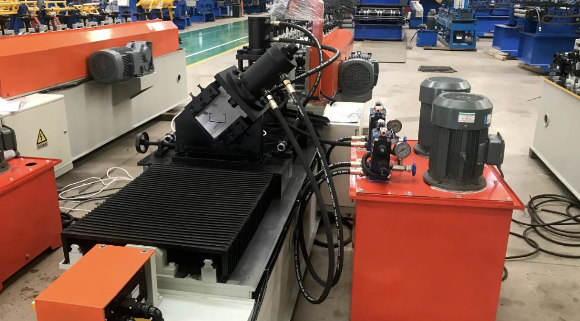Sharpening shear blades used in roll forming machines is a critical maintenance task that ensures clean, precise cuts and extends the life of the blades.
Why Sharpen Roll Forming Shear Blades?
Over time, shear blades become dull due to the continuous cutting of metal sheets, which can lead to burrs, uneven edges, or material deformation. Keeping the blades sharp:
- Improves cutting accuracy: Ensures clean, precise cuts with minimal material waste.
- Extends blade life: Proper sharpening prevents the need for premature replacement.
- Reduces machine wear: Dull blades put extra stress on the machine, leading to more wear on mechanical components.
- Increases productivity: Sharp blades reduce downtime and improve overall production efficiency.
When to Sharpen Shear Blades
Signs that it's time to sharpen the shear blades include:
- Visible dullness or chipping on the blade edges.
- Inconsistent or rough cuts.
- Increased effort or resistance during cutting.
- Excessive burr formation on the cut edges.
- Vibration or noise during the cutting process.
Steps for Sharpening Shear Blades
- Disassemble the Blades: Carefully remove the blades from the roll forming machine, following safety protocols.
- Inspect the Blades: Check for cracks, chips, or significant wear. If blades are damaged beyond sharpening, replacement may be necessary.
- Set Blade Sharpening Angles: Each blade has a recommended sharpening angle (typically between 5-15 degrees) based on the material it cuts. Always refer to the blade manufacturer’s guidelines.
- Use Proper Sharpening Equipment: A precision grinding machine is used to ensure consistent sharpening angles and even edges.
- Start with a coarse grind to remove nicks and dullness.
- Finish with a fine grind to restore a sharp edge.
- Cool During Grinding: To prevent overheating, apply coolant or water during the sharpening process. Excessive heat can weaken the blade's steel, leading to shorter life.
- Hone the Blade: After grinding, honing removes micro-burrs and polishes the edge for a smoother cut.
- Reassemble and Test: After sharpening, reinstall the blades on the machine and test with sample cuts to ensure they’re performing as expected.
Best Practices for Blade Maintenance
- Regular Inspections: Frequent checks help catch dullness early, preventing production issues.
- Proper Alignment: Misaligned blades wear unevenly and can damage the machine or material.
- Use Quality Blades: High-quality blades made from durable materials like high-speed steel (HSS) or carbide maintain their sharpness longer.
- Maintain Cutting Clearance: Adjusting the gap between blades prevents unnecessary wear and ensures smooth cuts.
Sharpening roll forming shear blades properly not only enhances productivity but also ensures consistent product quality and extends the lifespan of both the blades and the machine.



